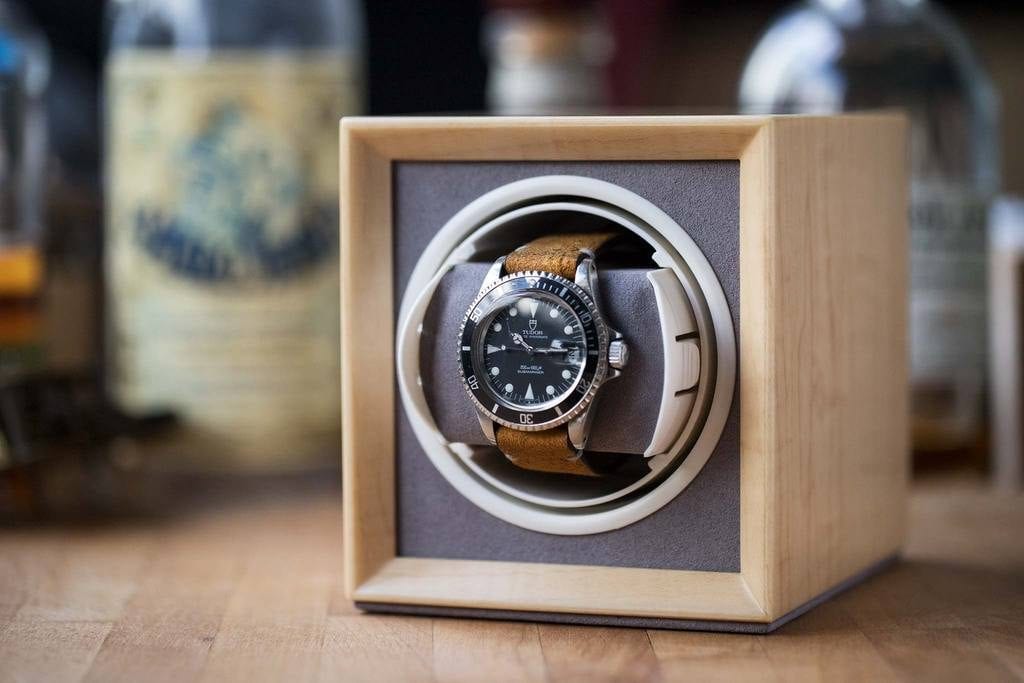Automatic Watch Winder Tips
What isn’t always readily known about mechanical watches is that they need to remain wound to function optimally. If a mechanical movement stagnates in an unwound state, the lubricants that keep things ticking smoothly begin to congeal. It doesn’t sound pretty and the results can be expensive to clean and relubricate. Thankfully a super handy invention exists out there for automatic mechanical movements—the watch winder. These devices, when set properly, give an even wind to an automatic watch. Having an even wind keeps an automatic mechanical watch precise, even if it’s not being worn. It will also keep the watch doctor away by keeping all of the watches moving parts from seizing up. To be noted, watch winders can be difficult to calibrate to an individual watch’s needs. So ahead we’re going to go over some tips for dialing in a watch winder’s settings.
TPD and Rotational Needs

The biggest thing to look out for is the amount of Turns Per Day (TPD) your watch requires to keep a healthy wind. Manufacturers will sometimes give a specified TPD along with your timepiece, which is great. But if it’s not readily available upon purchase it’s important to check online sources, contact the vendor that sold the watch, or reach out to the watchmaker for the exact TPD for your timepiece. In a situation where those options aren’t available, there is still a way to get the right amount of rotations figured out. As a rule of thumb—most wristwatches require 600-1000 TPD to stay efficiently wound. We recommend starting on the lower end of the spectrum and tweaking from there. From that point, things can be a bit tedious. You’ll need to keep an eye on the timepiece for 48 hours to track its accuracy. If the watch is gaining or losing time, adjust the TPD on the watch winder up or down until it’s keeping accurate time. It can take a few days but once the TPD matches the watch’s needs, you’ll be all set. A further note—before placing your watch on the winder be sure that it isn’t already completely stopped. If that’s the case give it about 30-40 turns on the crown for a preliminary wind. Automatic watches that do not wind on the crown should be worn before putting them on a winder, to kickstart their movement.
Another aspect of watch winding is the direction at which the winder rotates. Different watches will wind with more efficiently unidirectionally, some bi-directionally. This is another specification that should be learned via the manufacturer or watch vendor if at all possible. However, dialing it in with trial and error is an option. Be sure, if you do know which direction the watch winds best, to get a winder that meets that need. Otherwise test winding the watch clockwise, counter-clockwise, and bi-directionally as best as resources allow. When the TPD and rotational direction match properly over a 48 hour period—the watch should be keeping great time.
More Than One Watch
If you own more than one automatic mechanical watch, some watch winders can accommodate more than one timepiece. Typically these multi-watch winders offer separate settings for each separate winder. Owning multiple automatic watches can make it challenging to keep them all wound—but having an efficiently operating watch winder (or winders) will keep your watches happier and healthier for far longer stretches of time.
Times Ticking has been in operation for more than 30 years, since 1982. We have performed watch repair for customers both locally and internationally. If it Ticks! We KNOW it! Our team of watch repair technicians have a combined experience in watchmaking of over 120 years.

